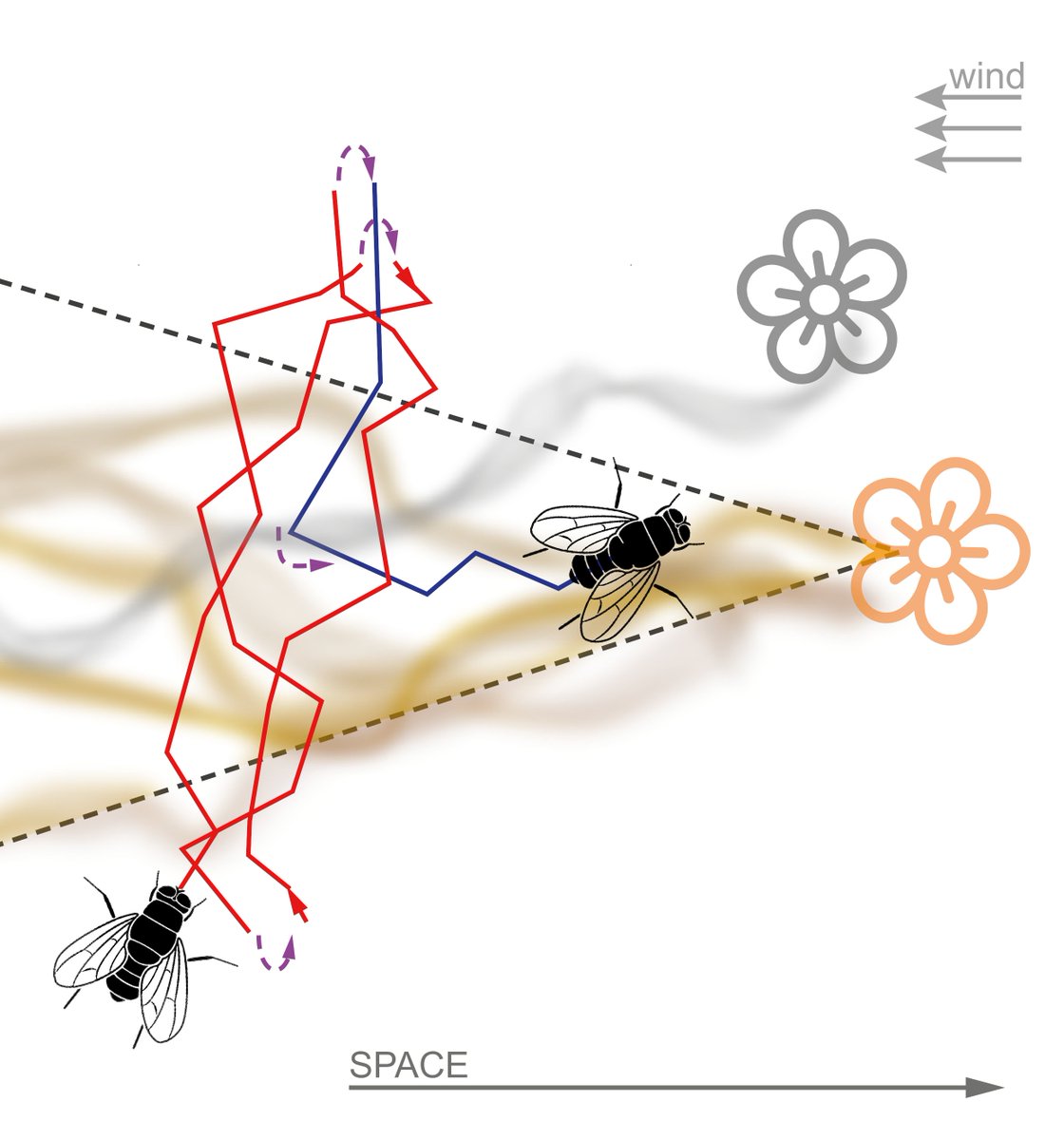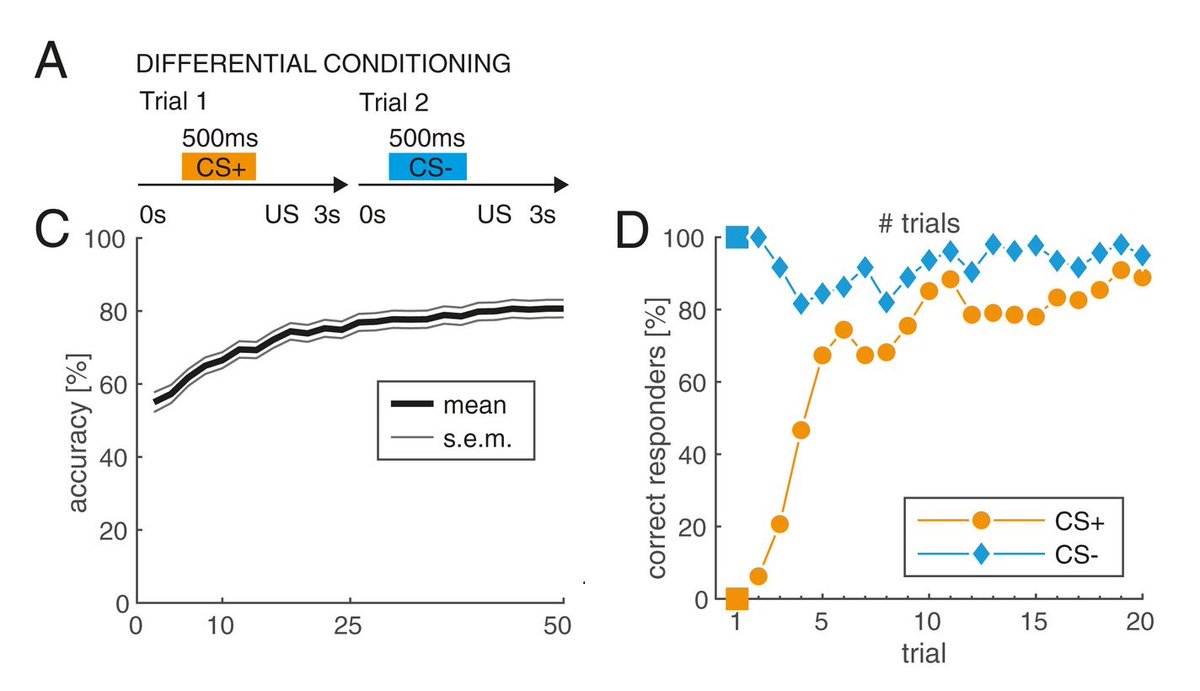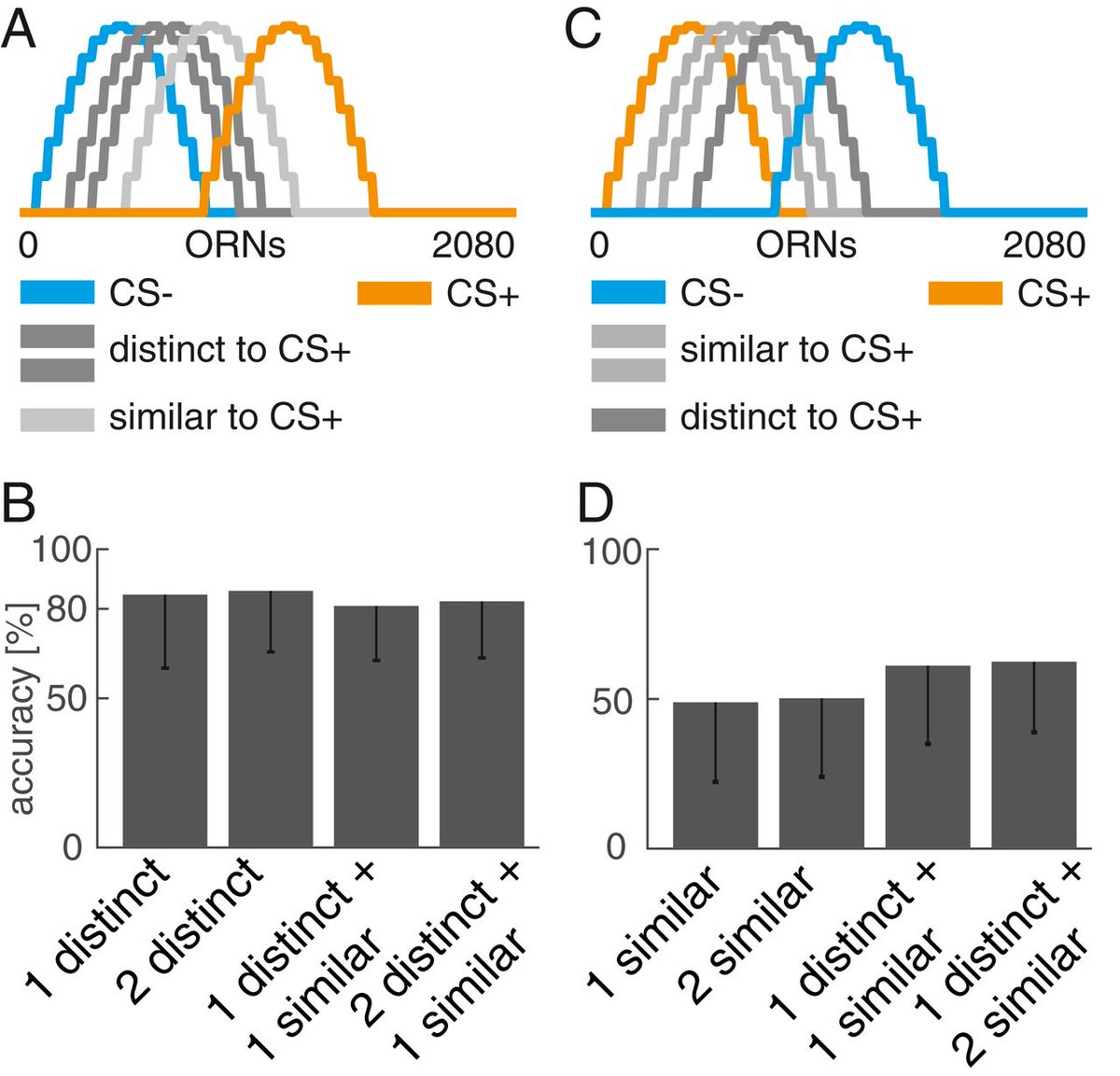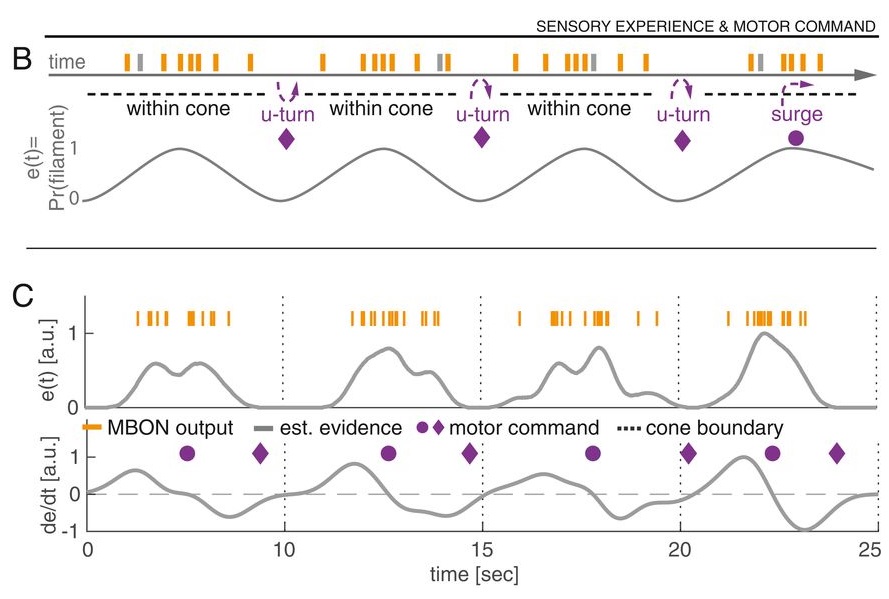Would you be able to find a strawberry in a room full of oranges - blindfolded and relying only on your sense of smell?  https://abs.twimg.com/emoji/v2/... draggable="false" alt="🪰" title="Fly" aria-label="Emoji: Fly">
https://abs.twimg.com/emoji/v2/... draggable="false" alt="🪰" title="Fly" aria-label="Emoji: Fly">
Drosophila fruit flies do it all the time - and we have successfully modelled their behaviour: a #MachineLearning meets #Neuroscience THREAD https://abs.twimg.com/emoji/v2/... draggable="false" alt="🧵" title="Thread" aria-label="Emoji: Thread">
https://abs.twimg.com/emoji/v2/... draggable="false" alt="🧵" title="Thread" aria-label="Emoji: Thread">
Drosophila fruit flies do it all the time - and we have successfully modelled their behaviour: a #MachineLearning meets #Neuroscience THREAD
This thread is about our recent paper (full version availible for free at  https://abs.twimg.com/emoji/v2/... draggable="false" alt="📒" title="Bestandsbuch" aria-label="Emoji: Bestandsbuch"> https://www.pnas.org/content/117/45/28412)
https://abs.twimg.com/emoji/v2/... draggable="false" alt="📒" title="Bestandsbuch" aria-label="Emoji: Bestandsbuch"> https://www.pnas.org/content/117/45/28412)
Why">https://www.pnas.org/content/1... is this so exciting? Our work fuses biology with #AI, #neuroscience and real fruitfly behavior.
It& #39;s not only multi-disciplinary, it& #39;s also multiscale! @fly_papers
Why">https://www.pnas.org/content/1... is this so exciting? Our work fuses biology with #AI, #neuroscience and real fruitfly behavior.
It& #39;s not only multi-disciplinary, it& #39;s also multiscale! @fly_papers
Our model captures many important features from cellular mechanisms, convergent-divergent connectivity, computational principles of population & temporal sparseness, learning through synaptic plasticity and ultimately motor command generation to execute behavioral strategies.
Our model rapidly solves a classical conditioning paradigm to discriminate 2 odors. Learning speed and accuracy matches performance of real insects. Strikingly a data set with only ~10 odor cue presentations is sufficient! No need for #ai with millions of samples.
Smells like overfitting to you? It generalizes to novel data sets of complex sequences composed of multiple odor cues (incl. unknown odors) without retraining !
One highlight is our proposal regarding the functional role of temporal sparseness: extraction of sensory evidence from the environment while retaining the original dynamics of cue encounters! This is important for behavioral control.
The sensory evidence generated by our model is proportional to the probability of filament encounters. Our work provides a plausible neural implementation how to accumulate olfactory evidence from recent encounters as nicely shown by recent work of @mah_demir in @eLife.

 Read on Twitter
Read on Twitter Drosophila fruit flies do it all the time - and we have successfully modelled their behaviour: a #MachineLearning meets #Neuroscience THREAD https://abs.twimg.com/emoji/v2/... draggable="false" alt="🧵" title="Thread" aria-label="Emoji: Thread">" title="Would you be able to find a strawberry in a room full of oranges - blindfolded and relying only on your sense of smell? https://abs.twimg.com/emoji/v2/... draggable="false" alt="🪰" title="Fly" aria-label="Emoji: Fly">Drosophila fruit flies do it all the time - and we have successfully modelled their behaviour: a #MachineLearning meets #Neuroscience THREAD https://abs.twimg.com/emoji/v2/... draggable="false" alt="🧵" title="Thread" aria-label="Emoji: Thread">" class="img-responsive" style="max-width:100%;"/>
Drosophila fruit flies do it all the time - and we have successfully modelled their behaviour: a #MachineLearning meets #Neuroscience THREAD https://abs.twimg.com/emoji/v2/... draggable="false" alt="🧵" title="Thread" aria-label="Emoji: Thread">" title="Would you be able to find a strawberry in a room full of oranges - blindfolded and relying only on your sense of smell? https://abs.twimg.com/emoji/v2/... draggable="false" alt="🪰" title="Fly" aria-label="Emoji: Fly">Drosophila fruit flies do it all the time - and we have successfully modelled their behaviour: a #MachineLearning meets #Neuroscience THREAD https://abs.twimg.com/emoji/v2/... draggable="false" alt="🧵" title="Thread" aria-label="Emoji: Thread">" class="img-responsive" style="max-width:100%;"/>





